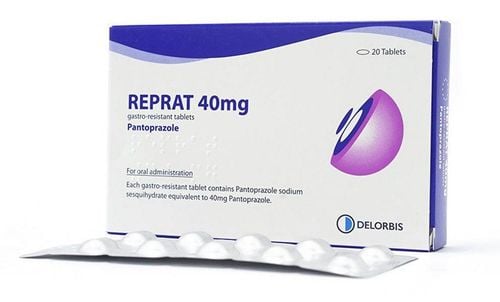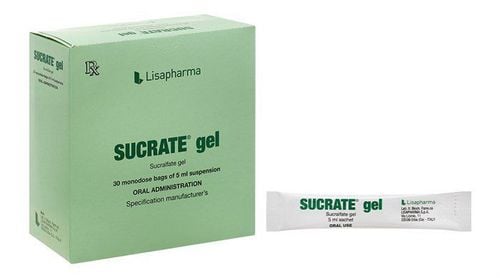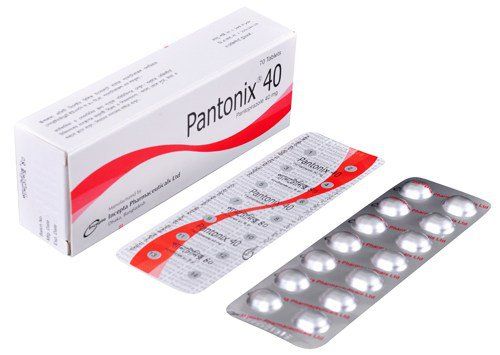Nexium 10mg and 40mg are prescribed to treat gastroesophageal reflux disease (GERD) in children. To better understand the benefits of Nexium 10mg, how to take it, and important precautions, read on. This article provides a comprehensive overview of Nexium 40mg and 10mg.
1. What are Nexium 10mg and Nexium 40mg?
Nexium Mups is an enteric-coated tablet containing the active ingredient esomeprazole. It is indicated for the treatment of GERD, peptic ulcers, and Zollinger-Ellison syndrome.
1.1. Composition and Formulation
Nexium 40mg: This drug is formulated as enteric-coated tablets, with the active ingredient being Esomeprazole 40mg.
Nexium 10mg: This drug is formulated as granules for oral suspension. Each sachet of Nexium 10mg contains:
- Esomeprazole as Magnesium Trihydrate 10mg.
- Other excipients.
1.2. Pharmacodynamics
Esomeprazole, the S-isomer of omeprazole, reduces gastric acid secretion through a specific mechanism of action. It is a specific inhibitor of the proton pump in the parietal cell. Both the R- and S-isomers of omeprazole have similar pharmacological effects.
Esomeprazole is a weak base that is concentrated and converted to the active form in the highly acidic environment of the 1 secretory canaliculi of the parietal cell, where it inhibits the 2 H+/K+-ATPase enzyme system and thus inhibits both basal and stimulated acid secretion.
1.3. Pharmacokinetics
The drug is rapidly absorbed, and the absolute bioavailability is 64% after a single 40mg oral dose. It increases to 89% with repeated once-daily dosing. The drug is 97% bound to plasma proteins. Esomeprazole is completely metabolized by the cytochrome P450 (CYP) system, primarily by the polymorphic CYP2C19, with the remainder being metabolized by CYP3A4. Approximately 80% of an oral dose of omeprazole is excreted in urine, mostly as metabolites, with the remainder excreted in the feces. Less than 1% of the drug is recovered unchanged in urine.
2. What does Nexium treat?
Nexium and similar drugs containing esomeprazole are used for the following conditions:
- Treating gastroesophageal reflux disease (GERD): A condition characterized by symptoms such as belching, heartburn, chest pain, nausea, hoarseness, coughing...
- Treating stomach and duodenal ulcers caused by H. pylori infection: When H. pylori infection is detected, your doctor may prescribe it in combination with antibiotics.
- Stomach ulcers caused by long-term use of nonsteroidal anti-inflammatory drugs: Nexium may be prescribed by your doctor in combination with nonsteroidal anti-inflammatory drugs to prevent the development of stomach ulcers.
- Zollinger-Ellison syndrome: A condition that causes excess acid in the stomach.
3. Side effects
At recommended doses, the following side effects may occur:
- Headache
- Abdominal pain, diarrhea, constipation, bloating, vomiting, nausea
- Dizziness
- Dry mouth
- Increased liver enzymes
- Peripheral edema
- Fractures of the hip, spine, or wrist,...
If you notice any side effects, you should notify your doctor immediately for appropriate instructions.
4. How to use Nexium 10mg and Nexium 40mg effectively
4.1. How to use Nexium 10mg
How to prepare the medication:
- Empty the entire contents of the sachet into a cup containing approximately 15ml of water. If using 2 sachets, use 30ml of water.
- Stir well until the granules are completely dispersed and let stand for a few minutes to thicken.
- Stir again and drink within 30 minutes.
- Swallow the suspension directly and do not chew or crush the granules.
- Rinse the cup with 15ml of water to ensure you take the full dose.
- Take 1 hour before breakfast.
Dosage:
For children aged 1-11 years weighing ≥ 10 kg.
Erosive esophagitis due to reflux confirmed by endoscopy (treatment for 8 weeks):
- Weight 10-20 kg: 1 sachet/dose/day.
- Weight over 20 kg: 1-2 sachets/dose/day.
Symptoms of gastroesophageal reflux disease: 1 sachet/dose/day for 8 weeks.
For children aged 4 years and above:
- Dose: 2 times/day for 1 week.
- Recommended dosage:
- Weight < 30kg: 10mg Esomeprazole in combination with 25mg/kg Amoxicillin and 7.5mg/kg Clarithromycin.
- Weight 30-40kg: 20mg Esomeprazole in combination with 750mg Amoxicillin and 7.5mg/kg Clarithromycin.
- Weight >40kg: 20mg Esomeprazole in combination with 1g Amoxicillin and 500mg Clarithromycin.
4.2. How to use Nexium 40mg
You should not chew or crush the tablet, nor should you dissolve it in water. The tablet should be swallowed whole with a glass of water.
For children who cannot swallow the tablet whole, a powder form for suspension can be used.
Dosage
For the treatment of gastroesophageal reflux disease (GERD):
- Healing erosive esophagitis: 40 mg once daily for 4 weeks.
- Long-term treatment of healed esophagitis to prevent recurrence: 20 mg once daily.
- Symptomatic treatment of GERD: 20 mg once daily.
In combination with appropriate antibiotic therapy to eradicate Helicobacter pylori:
- Nexium Mups 20 mg is combined with amoxicillin 1g and clarithromycin 500 mg, all taken twice daily for 7 days.
For long-term treatment after prevention of recurrent bleeding from peptic ulcers with intravenous therapy:
- Use 40 mg once daily for 4 weeks.
For the treatment of Zollinger-Ellison syndrome:
- The recommended starting dose is 40 mg twice daily.
- Adjust the dose according to the individual patient's response.
- Clinical data suggest that most patients are controlled on 80-160 mg daily.
- When the daily dose exceeds 80 mg, it should be divided into two doses.
Note: The above dosage is for reference only and the specific dosage may vary depending on the patient's condition and the severity of the disease. Therefore, to get the appropriate dosage, please consult your doctor or healthcare professional.
4.3. What to do in case of overdose?
To date, there is very little experience with intentional overdose. The symptoms described in relation to the use of a 280 mg dose are gastrointestinal symptoms and fatigue. There is no specific antidote. In case of overdose, you should treat the symptoms and use general supportive measures.
4.4. What to do if you miss a dose?
Take the missed dose as soon as you remember.
However, if it is almost time for the next dose, skip the missed dose and continue your regular dosing schedule. Do not take a double dose to make up for a missed one.
5. Precautions when using Nexium
5.1. For pregnant and breastfeeding women
There are no clinical data on the use of the drug in pregnant women. The safety and risk to the fetus have not been fully established. Therefore, caution should be exercised when prescribing this drug. It has not been verified whether the drug is excreted in breast milk. The effects of the drug on breastfeeding infants are unknown. Therefore, do not use the drug while breastfeeding.
5.2. For drivers and machine operators
No adverse effects on the ability to drive and operate machinery have been reported. Therefore, it can be used in this group of subjects.
6. How to store Nexium?
Do not store the drug at temperatures above 30°C. Store the medicine in the original blister pack (for tablets) or in the sachet (for powder) until use to avoid environmental effects. Do not remove the tablets from the blister pack until ready to use.
It is hoped that with the information about Nexium, you will know how to use it safely, effectively, and minimize side effects.
To arrange an appointment, please call HOTLINE or make your reservation directly HERE. You may also download the MyVinmec app to schedule appointments faster and manage your reservations more conveniently.
To arrange an appointment, please call HOTLINE or make your reservation directly HERE. You may also download the MyVinmec app to schedule appointments faster and manage your reservations more conveniently.








